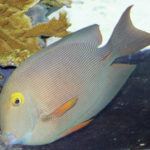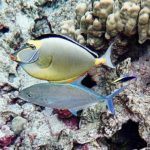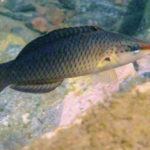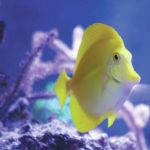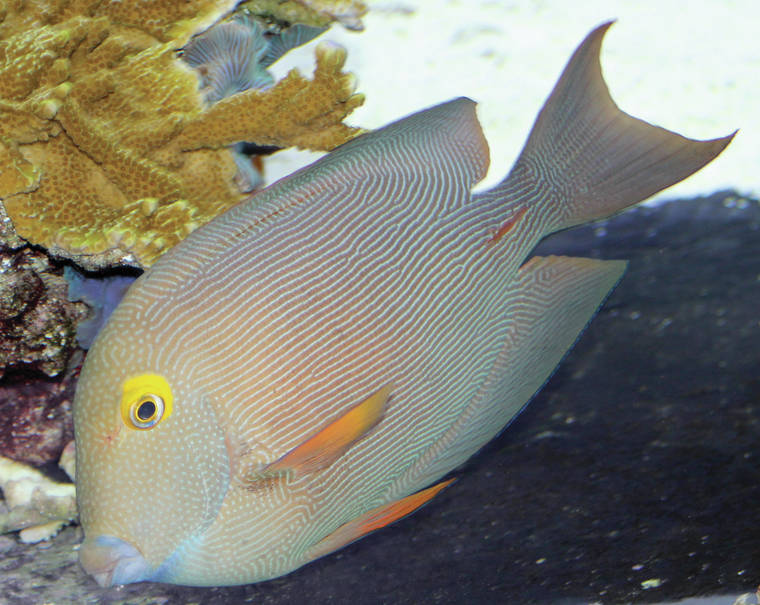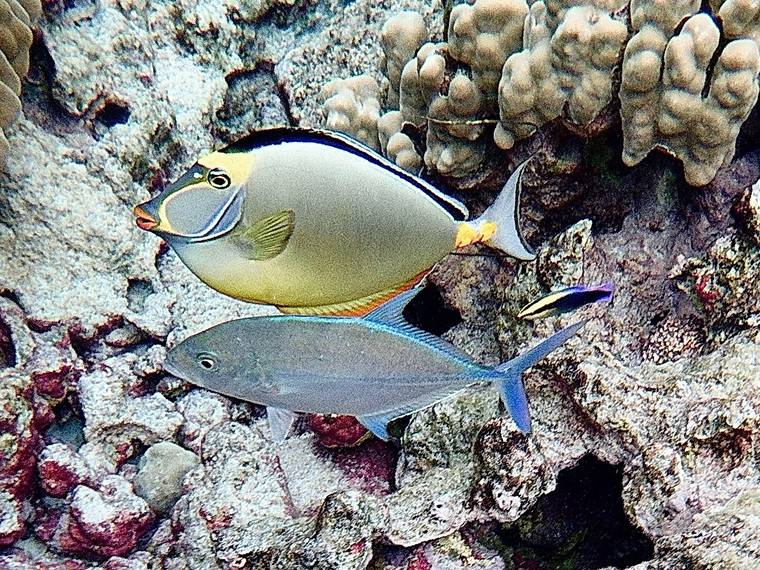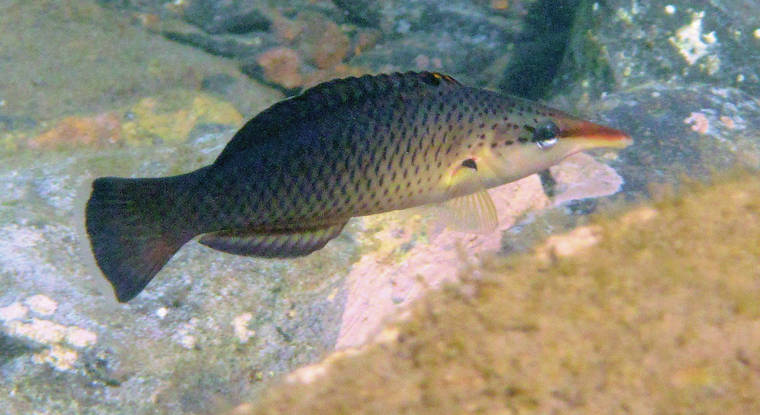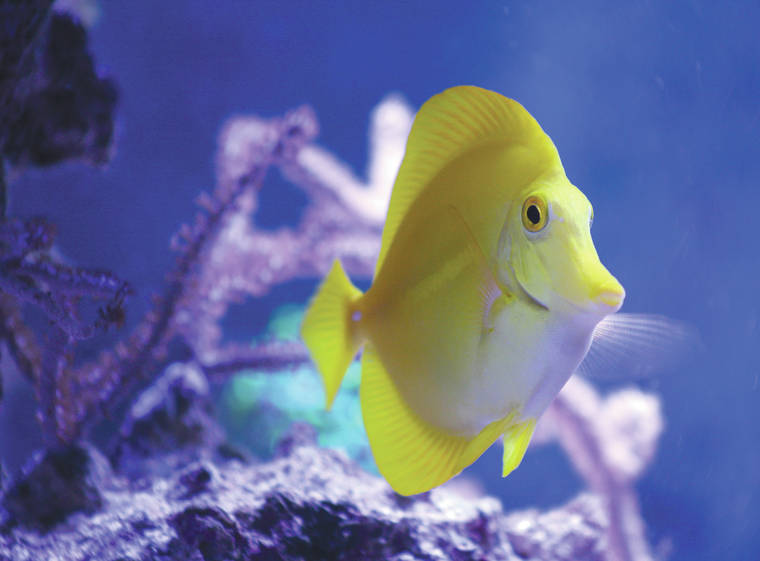A revised environmental impact statement from a commercial aquarium collectors’ group states it will rely on fish population trend data and projected population trends to implement catch quotas along the West Hawaii coast.
That represents a change from earlier reliance on publications the state Board of Land and Natural Resources, in its 2020 rejection of an earlier EIS, said weren’t shown by applicant Pet Industry Joint Advisory Council as “the best available science.”
The industry group maintained its preference for an alternative that cuts the number of commercial aquarium fishing permits issued in the West Hawaii Regional Fishery Management Area from 10 to seven and reduces the allowable commercial catch from 40 to eight species. The fishery management area spans the entire coastline of West Hawaii, from Upolu Point in North Kohala to Ka Lae (South Point) in Ka‘u.
“This alternative is based on the best available science, supports the (Department of Land and Natural Resources’) purpose to ensure Applicant’s Actions do not lead to degradation of fish populations and the habitats in which they occur in the context of commercial aquarium collection, specifically addresses concerns related to declining populations and sustainable collection, and supports the Applicant’s purpose and need to for the lawful, responsible, and sustainable commercial collection of eight aquarium fish species from nearshore habitats,” the EIS states.
Rene Umberger, executive director of For the Fishes, disagrees that the revised EIS includes all the necessary science. While the removal of a reliance on publications based on what the industry saw as sustainable fish collection in the Philippines, the population trend data, taken from the state of Hawaii, doesn’t include a baseline comparison, such as by looking at population trends in protected areas, she said.
“They took a baby step, but they still have failed to describe the actual impacts,” Umberger said. “They’re using just a piece of the state’s data. … We’re of course going to argue it’s as inadequate as the first one that BLNR rejected.”
The aquarium fishing industry, if allowed to reopen, would add an estimated 57 jobs and $1.67 million annually to state coffers. The gross sale price of aquarium fish varies, but the popular yellow tang, for example, bring in an average of $4.29 each, compared to the less common potter’s angelfish, which averages about $8 each, according to figures contained in the EIS.
Only yellow tang, kole, orangespine unicornfish, potter’s angelfish, brown surgeonfish, Thompson’s surgeonfish, black surgeonfish and bird wrasse would be allowed to be taken, under the plan.
The 1,585-page revised EIS, published Tuesday in the state’s Environmental Notice, does not include a second public comment period but is sent instead to the Land Board, which will decide whether to accept or reject it. If it’s accepted, the board selects which of the seven alternatives to approve, including the no-action alternative that would continue the ban on commercial aquarium fish harvesting around Hawaii Island.
The purpose of the revised EIS is to inform the public of the proposed action that takes into account information gathered through public involvement in the Hawaii Environmental Policy Act process beginning in 2018, the document states.
No aquarium permits or commercial marine licenses for commercial aquarium collection would be issued under this EIS for other areas of the state, including East Hawaii.
Email Nancy Cook Lauer at ncook-lauer@westhawaiitoday.com.
